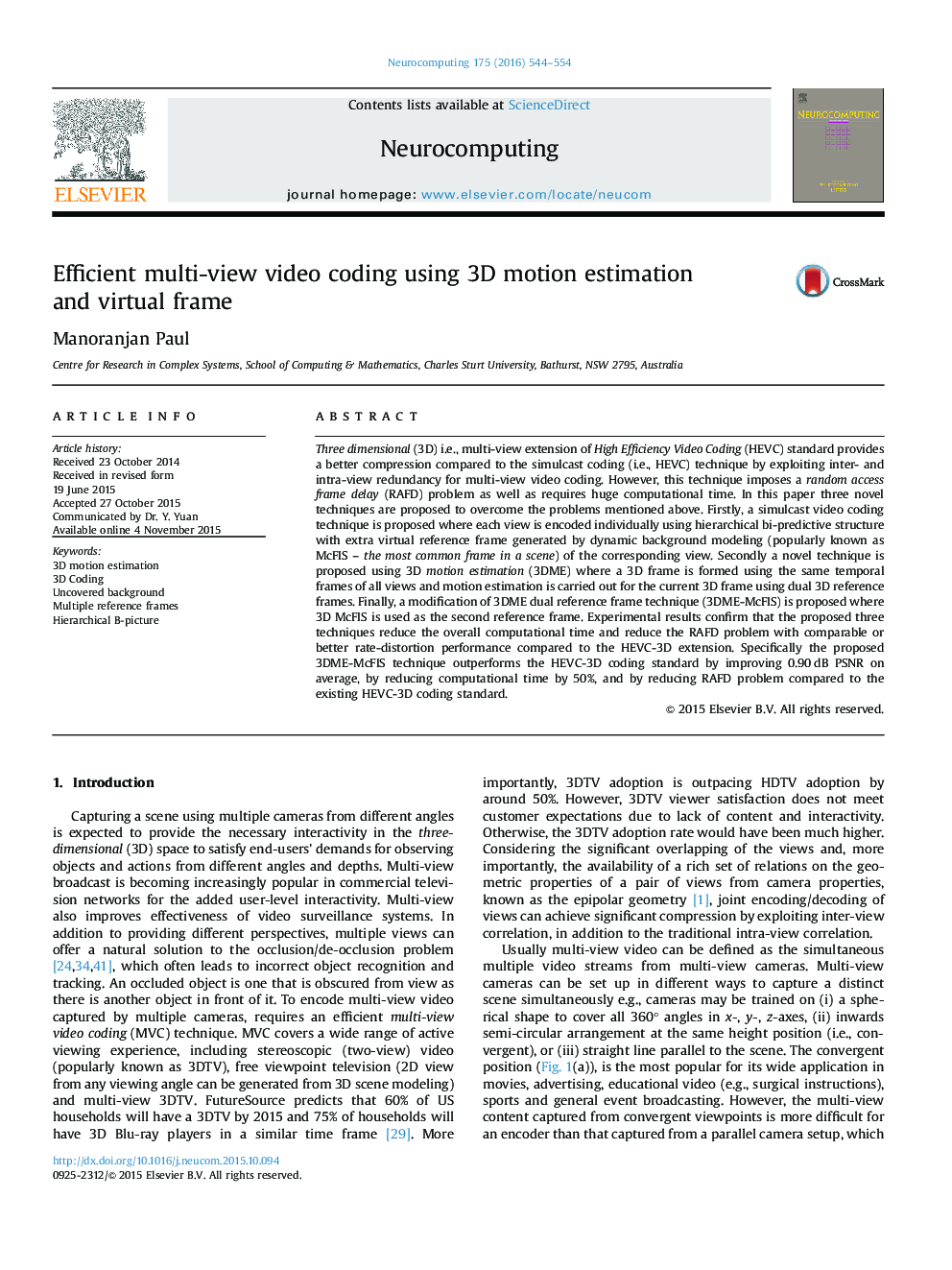| Article ID | Journal | Published Year | Pages | File Type |
|---|---|---|---|---|
| 407186 | Neurocomputing | 2016 | 11 Pages |
Three dimensional (3D) i.e., multi-view extension of High Efficiency Video Coding (HEVC) standard provides a better compression compared to the simulcast coding (i.e., HEVC) technique by exploiting inter- and intra-view redundancy for multi-view video coding. However, this technique imposes a random access frame delay (RAFD) problem as well as requires huge computational time. In this paper three novel techniques are proposed to overcome the problems mentioned above. Firstly, a simulcast video coding technique is proposed where each view is encoded individually using hierarchical bi-predictive structure with extra virtual reference frame generated by dynamic background modeling (popularly known as McFIS – the most common frame in a scene) of the corresponding view. Secondly a novel technique is proposed using 3D motion estimation (3DME) where a 3D frame is formed using the same temporal frames of all views and motion estimation is carried out for the current 3D frame using dual 3D reference frames. Finally, a modification of 3DME dual reference frame technique (3DME-McFIS) is proposed where 3D McFIS is used as the second reference frame. Experimental results confirm that the proposed three techniques reduce the overall computational time and reduce the RAFD problem with comparable or better rate-distortion performance compared to the HEVC-3D extension. Specifically the proposed 3DME-McFIS technique outperforms the HEVC-3D coding standard by improving 0.90 dB PSNR on average, by reducing computational time by 50%, and by reducing RAFD problem compared to the existing HEVC-3D coding standard.
